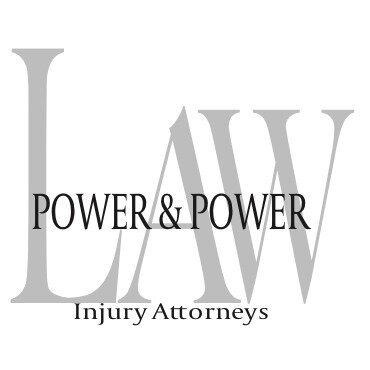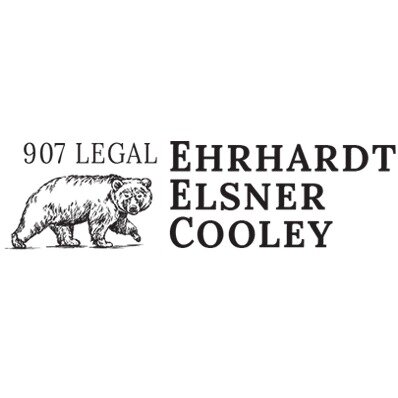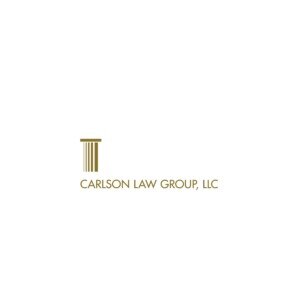Best Toxic Tort Lawyers in Alaska
Share your needs with us, get contacted by law firms.
Free. Takes 2 min.
Or refine your search by selecting a city:
List of the best lawyers in Alaska, United States
About Toxic Tort Law in Alaska, United States
Toxic tort law is a specialized area of law that provides legal remedies to individuals who have suffered harm due to exposure to dangerous substances or chemicals. These substances can include hazardous waste, pesticides, industrial chemicals, pharmaceuticals, and more. In Alaska, toxic tort cases are particularly relevant due to the state's industrial activities such as mining, oil and gas production, and shipping, all of which carry the risk of accidental releases of harmful substances into the environment. Toxic tort law holds individuals, companies, or organizations responsible if their actions or negligence lead to environmental contamination or personal injury.
Why You May Need a Lawyer
You may need a toxic tort lawyer if you believe that exposure to a chemical, hazardous material, or pollutant has caused you injury, illness, or property damage. Legal help is often needed in the following situations:
- You or your family members develop health problems that you suspect are linked to environmental or occupational exposures.
- You discover contamination in your home, land, or drinking water, possibly due to industrial activity nearby.
- There is a community-wide exposure event, such as a chemical spill or toxic release.
- You are concerned about ongoing exposure through your workplace or community but do not know your rights.
- A product you used regularly caused adverse health effects, and others have experienced the same issues.
Toxic tort cases are complex, often requiring expert testimony, scientific studies, and strict adherence to procedural rules. An experienced attorney can help you understand your rights, assess the strength of your case, gather evidence, and pursue compensation for your injuries or damages.
Local Laws Overview
Alaska follows both federal and state laws regarding toxic tort claims. Some key aspects include:
- Statute of Limitations: Alaska law generally requires personal injury or property damage lawsuits to be filed within two years of the date the injury was discovered or should have been discovered. Special rules may apply if the exposure was ongoing or if the injured party was a minor.
- Strict Liability: In certain situations, Alaska law may impose strict liability for abnormally dangerous activities, such as handling toxic chemicals, regardless of the intent or negligence of the responsible party.
- Comparative Fault: Alaska uses a pure comparative fault system. This means that if you are partially at fault for your injury, your damages may be reduced by your percentage of fault, but recovery is still possible.
- Federal Environmental Laws: Cases often involve federal laws, such as the Comprehensive Environmental Response, Compensation, and Liability Act (CERCLA or Superfund), which governs the cleanup of hazardous waste sites and allows recovery of cleanup costs.
- State Agencies: The Alaska Department of Environmental Conservation (ADEC) is responsible for regulating environmental hazards, investigating toxic exposures, and enforcing relevant state regulations.
Because of the complexity of both state and federal regulations, advice from a local attorney with experience in Alaska's legal system is critical.
Frequently Asked Questions
What is a toxic tort claim?
A toxic tort claim is a lawsuit filed by someone who has been injured or suffered damages as a result of exposure to a hazardous substance, such as chemicals, pollutants, or toxic materials.
Who can be held liable in a toxic tort case in Alaska?
Potentially responsible parties can include manufacturers, distributors, employers, property owners, contractors, and entities responsible for releasing or mishandling toxic substances.
What kinds of exposures give rise to toxic tort cases?
Common exposures include contaminated soil or groundwater, air pollution, exposure to asbestos or mold in buildings, workplace chemical exposure, or pharmaceutical side effects.
Can I file a claim if I was exposed years ago?
Possibly. Alaska law allows you to file a claim within two years of discovering your injury or when you should have reasonably discovered the harm. This is especially relevant in cases where symptoms appear long after the initial exposure.
What compensation can I receive in a toxic tort case?
Damages may include medical expenses, lost wages, pain and suffering, property devaluation, cleanup costs, and sometimes punitive damages for egregious conduct.
Do I need to prove fault in a toxic tort claim?
It depends. Some cases require proof of negligence, while others may impose strict liability where proof of carelessness is not necessary, especially in inherently dangerous activities.
How do I know if my illness is related to toxic exposure?
Medical records, exposure history, and scientific evidence are used to establish a link. A toxic tort attorney often works with medical and environmental experts to determine causation.
Are group or class action lawsuits possible in Alaska?
Yes. If multiple people are affected by the same exposure, a class action may be appropriate. This can make litigation more efficient and effective, especially for community-wide incidents.
Who investigates environmental hazards in Alaska?
The Alaska Department of Environmental Conservation (ADEC) is the primary state agency investigating environmental and toxic hazards. Federal agencies such as the Environmental Protection Agency (EPA) may also be involved.
What should I do if I suspect toxic exposure?
Seek medical attention, document your symptoms and exposures, preserve any evidence (such as photos, materials, or medical records), report the incident to relevant authorities, and consult a toxic tort lawyer as soon as possible.
Additional Resources
- Alaska Department of Environmental Conservation (ADEC) - Handles environmental complaints, hazardous waste management, and spill response in Alaska
- U.S. Environmental Protection Agency (EPA) - Oversees enforcement of federal environmental laws and Superfund sites in Alaska
- Alaska Bar Association - Can provide referrals to experienced toxic tort attorneys in Alaska
- Agency for Toxic Substances and Disease Registry (ATSDR) - Provides information on health effects of toxic substances
- Local health departments - Offer assistance with community health concerns related to environmental exposures
Next Steps
If you believe you have been harmed by exposure to toxic substances in Alaska, it is important to take the following actions:
- Document your experience, symptoms, and any potential sources of exposure thoroughly
- Seek prompt medical evaluation to address your health and create a record of your injuries
- Contact relevant authorities such as the Alaska Department of Environmental Conservation to report your concerns and initiate an investigation
- Consult with an experienced toxic tort attorney as soon as possible to discuss your rights and the best strategy for your situation
- Preserve any evidence, including materials, water or soil samples, communication records, or photographs of affected areas
Early action is crucial. Toxic tort cases are complex and often require expert support and detailed legal knowledge. A qualified local attorney can help you navigate the process and pursue compensation or remediation for your injuries and losses.
Lawzana helps you find the best lawyers and law firms in Alaska through a curated and pre-screened list of qualified legal professionals. Our platform offers rankings and detailed profiles of attorneys and law firms, allowing you to compare based on practice areas, including Toxic Tort, experience, and client feedback.
Each profile includes a description of the firm's areas of practice, client reviews, team members and partners, year of establishment, spoken languages, office locations, contact information, social media presence, and any published articles or resources. Most firms on our platform speak English and are experienced in both local and international legal matters.
Get a quote from top-rated law firms in Alaska, United States — quickly, securely, and without unnecessary hassle.
Disclaimer:
The information provided on this page is for general informational purposes only and does not constitute legal advice. While we strive to ensure the accuracy and relevance of the content, legal information may change over time, and interpretations of the law can vary. You should always consult with a qualified legal professional for advice specific to your situation.
We disclaim all liability for actions taken or not taken based on the content of this page. If you believe any information is incorrect or outdated, please contact us, and we will review and update it where appropriate.
Browse toxic tort law firms by city in Alaska
Refine your search by selecting a city.














